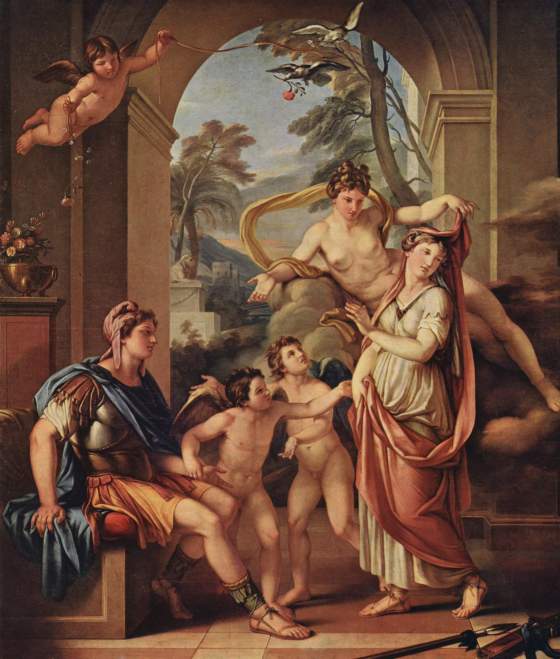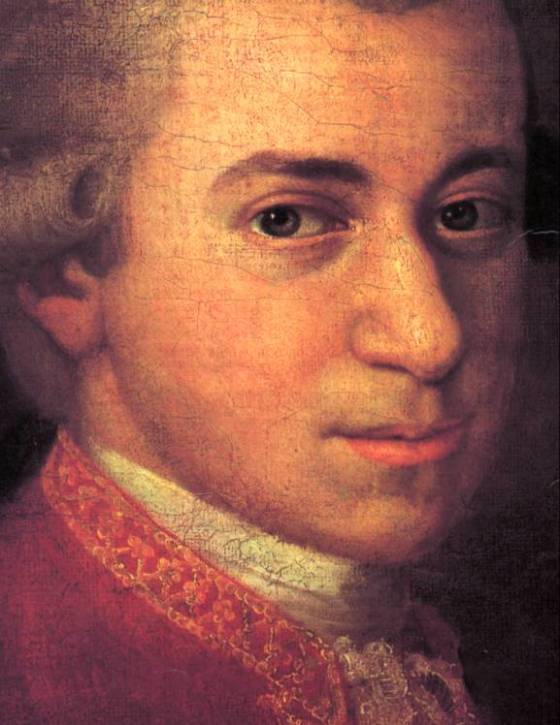Gavin Hamilton had already studied in Rome in the 1740s. After a short stay in London, he returned there for good in 1756. In the 1770s, he undertook many excavations as an art dealer and archaeologist. When he painted this life-size Venus giving Helen to Paris as his wife, now held by the Palazzo Braschi, in 1782-84, he had already spent about thirty years in Rome.
Johann Nepomuk della Croce was very popular in his time, it has been estimated that he painted 5,000 portraits. In 1780 or 1781 he painted the Mozart family. The portrait of Wolfgang Amadeus that you see above is a detail of that picture. It is considered one of the best portraits from his lifetime and was the main source for the well-known posthumous one by Barbara Krafft.
The last movement of the Piano Sonata No. 11 in A major, K 331, Alla Turca, popularly known as the Turkish Rondo, is one of Mozart’s best-known piano pieces. It imitates the sound of Turkish Janissary bands, the music of which was much in vogue at the time. It is not known where and when Mozart composed the sonata. Vienna or Salzburg around 1783 is thought to be most likely, though Paris and dates as far back as 1778 have been suggested as well.
Thaïs was a hetaera from Athens, companion of Alexander’s general Ptolemy, who would later become King of Egypt. She was witty and entertaining, and Alexander liked her a lot. Her claim to fame, if you want to call it that, was to have instigated Alexander to destroy the palaces of Persepolis in drunken revelry.
Thaïs appears in some works of art and literature, usually as Alexander’s, not Ptolemy’s, lover. She seems to have been especially popular in England for a while. In 1697, John Dryden wrote an ode Alexander’s Feast, or the Power of Music, which was put into music by Jeremiah Clarke, a score that is now lost. In 1736, Georg Friedrich Händel composed an ode Alexander’s Feast with a libretto by Newburgh Hamilton, based on Dryden’s earlier work. And in 1781, she became the heroine of one of the first English history paintings, an art that was only just developing in England at the time.
The model for Sir Joshua Reynolds’ Thaïs was sixteen year old Amy Lyon, who would later become famous as Emma, Lady Hamilton, Lord Nelson’s mistress.
This is one of Angelica Kauffmann’s lesser known portraits. It shows singer Sarah Harrop, around the time of her wedding with Joah Bates 1780, as a muse (Angelica Kauffmann liked painting her female patrons as muses or vestal virgins). It was exhibited at the Royal Academy in 1781 and then mostly vanished from sight till it was bought by the Princeton University Art Museum in 2010. You can read more about Sarah Harrop, the portrait and its rather complex symbolism here.





